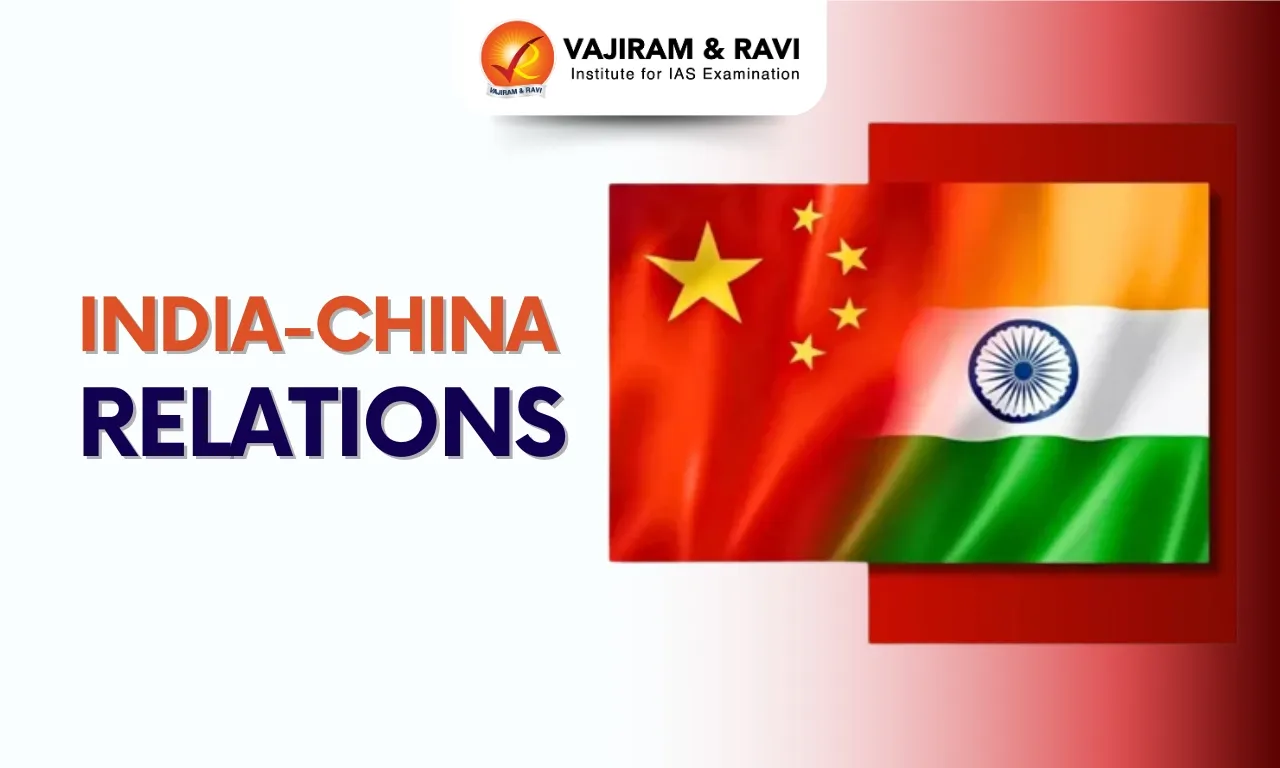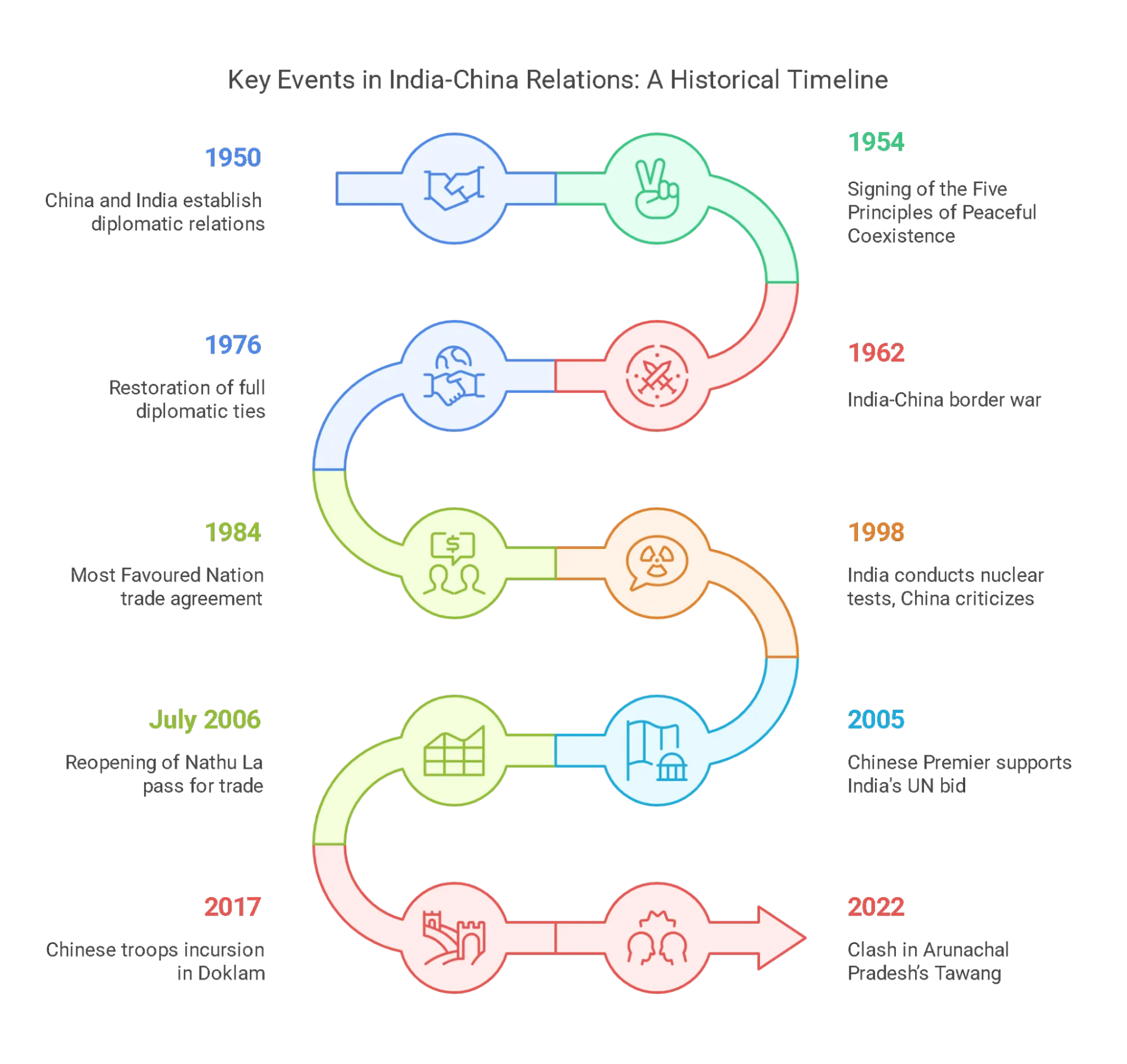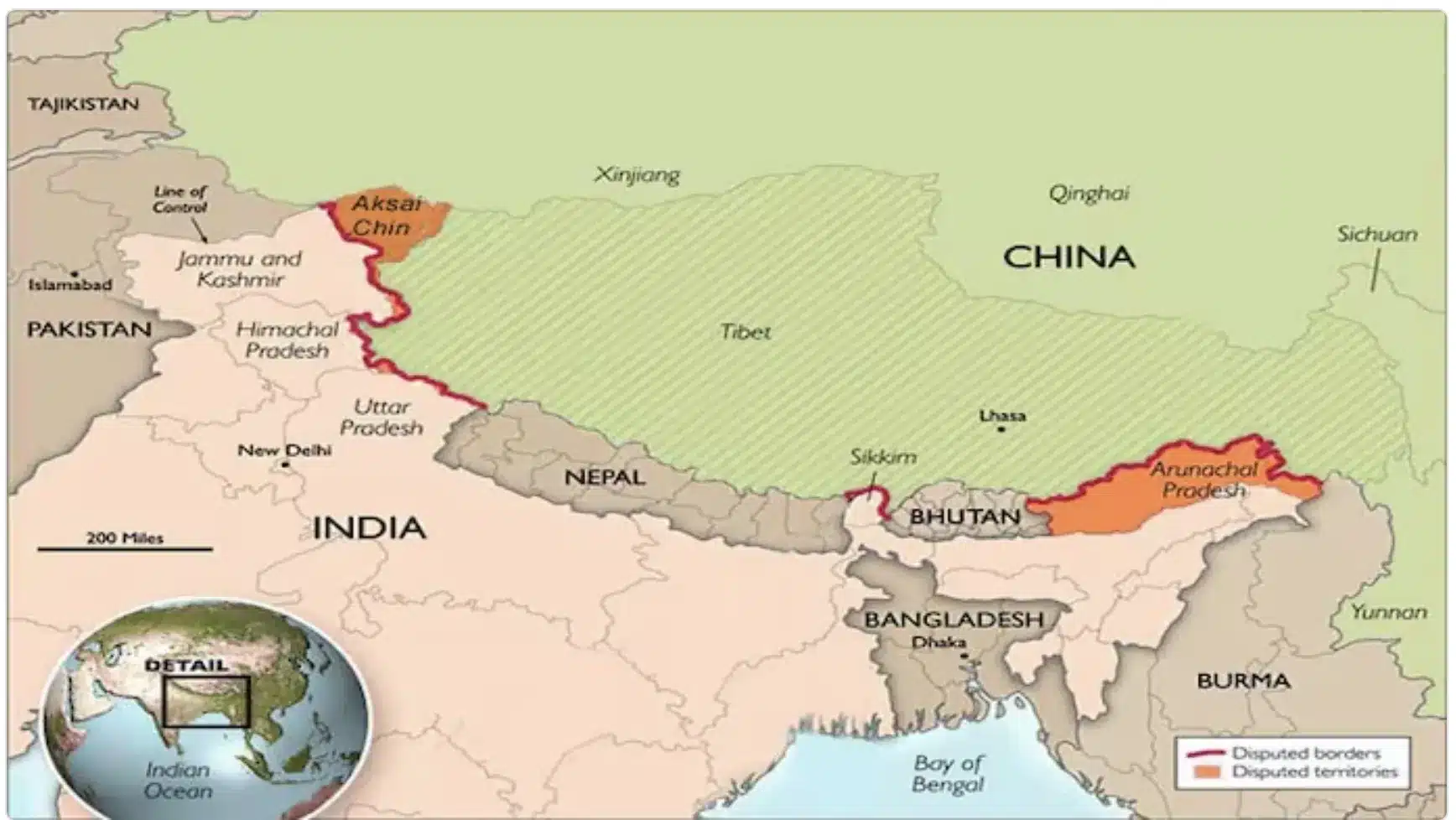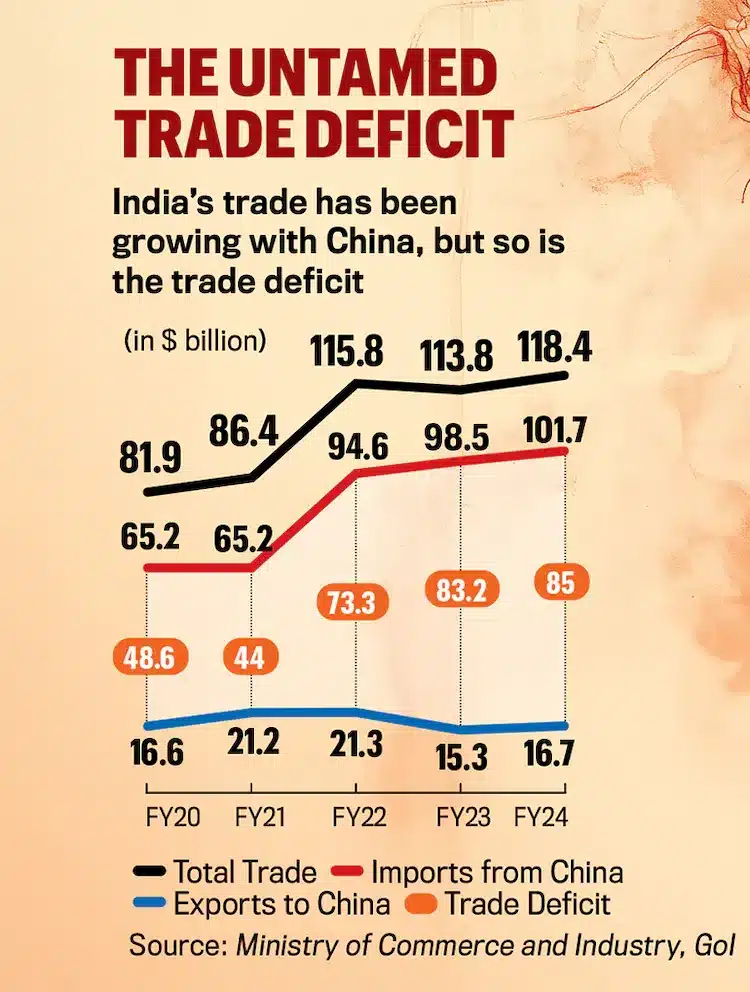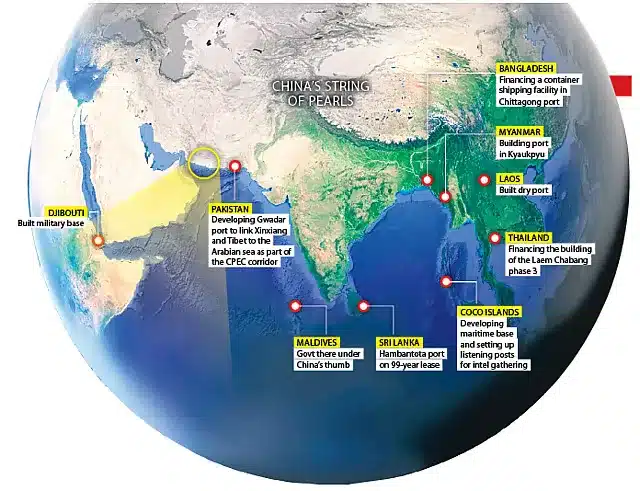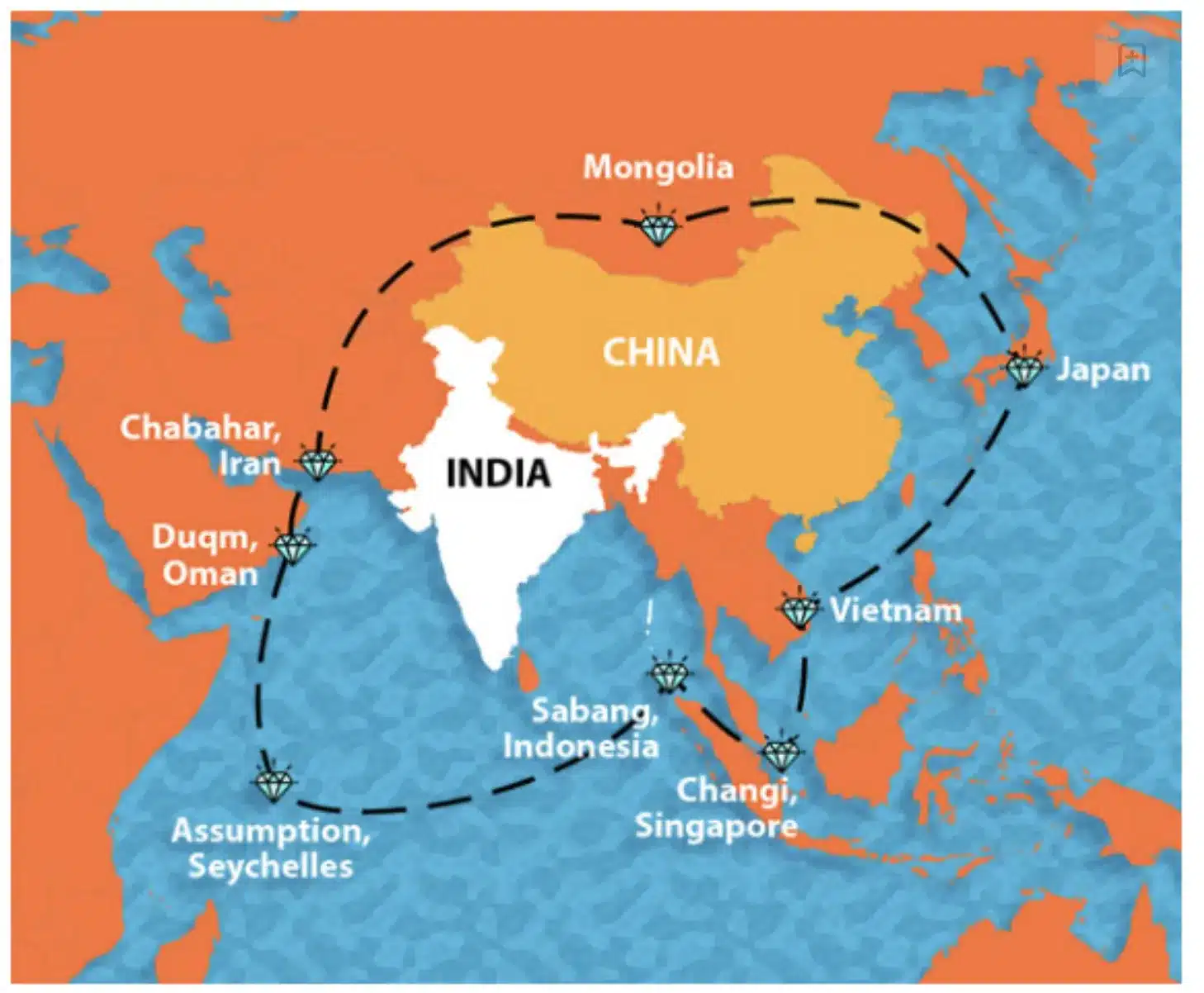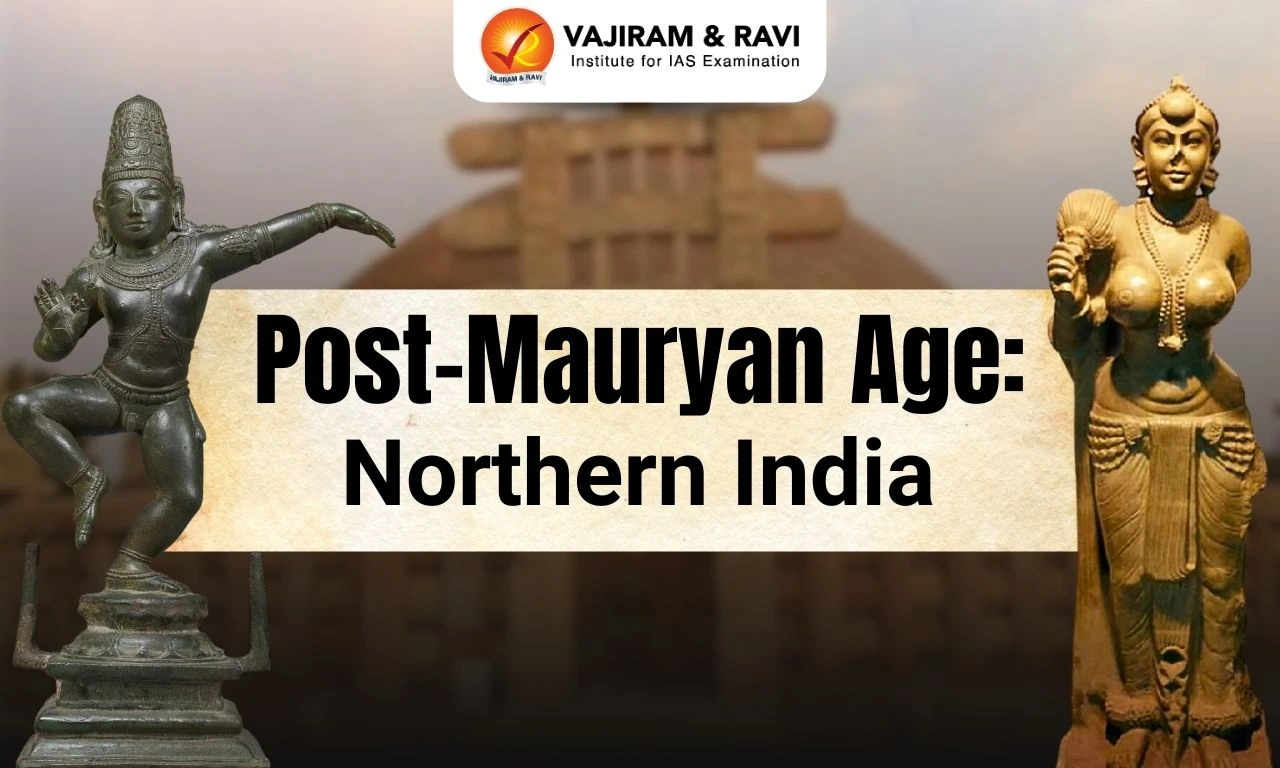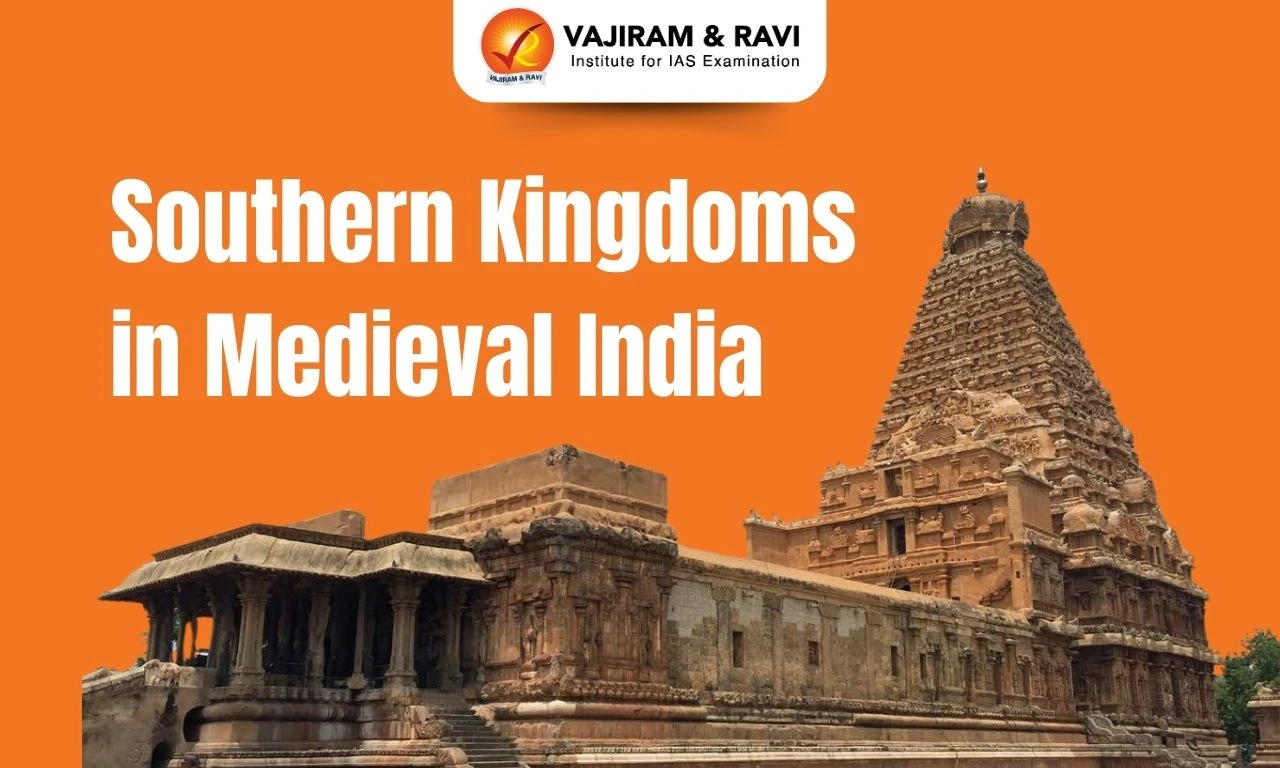India China relations are complex and dynamic shaped by historical ties, economic collaboration, and persistent border disputes. Formal diplomatic relations were established on April 1, 1950, when India became the first non-socialist bloc country to recognise China. However, the 1962 border conflict caused a major setback. Efforts by the Indian government in 1988 revived bilateral ties, fostering trade, cultural exchanges, and people-to-people connections.
Despite ongoing security and strategic concerns, both nations continue to work toward a structured framework for cooperation. The focus remains on balancing national interests while fostering a constructive partnership that enhances regional stability and mutual growth.
India China Relations Overview
India and China, located in the southern and eastern parts of Asia, respectively, are major developing nations with significant influence in South Asian and global politics. Initially, they had a cordial relationship and brotherly bond, but border conflicts and tensions have led to the fragmentation of ties.
Both nations are part of several multilateral groupings like BRICS, G20, etc., and need to utilize these forums for mutual trust and cooperation building on the Panchsheel Principles agreed between them in 1954. India and China, home to 2.8 billion people, have deep economic ties, with China as India's top trading partner.
India China Relations History
India China Relations History date back to the 2nd century B.C. The relationship between India and China has improved through several exchanges and visits by political and spiritual leaders. The details are discussed below:
- Impact of Buddhism: The contact at the level of people through commerce got a fillip with the advent of Buddhism into China from India in the first century A.D.
- Role of Travellers: Chinese travellers like Fa Xian and Xuan Zang and Indian travellers like Bodhidharm,a helped in information and cultural exchange between both nations.
- Period of Independence Struggle: The period of British Rule saw increased camaraderie between both nations which saw events like Kang Youwei's stay in India (1890s), Rabindranath Tagore's visit to China (1924), sending of the Aid China Medical Mission, which included Dr. Dwarakanath Kotnis, by the Indian National Congress (1938), etc.
- Ties after Independence: The period of the 1950s saw the Hindi-Chini Bhai Bhai phase, which led to the strengthening of ties.
India China Relations Timeline
India China Relations have evolved with time and witnessed several ebbs and flows. The chronology of key events is mentioned below:
- 1950: Establishment of diplomatic relations between China and India.
- 1954: Signing of the “Panchsheel” Five Principles of Peaceful Coexistence
- 1962: Brief border war between India and China
- It was fought over disputed territory in the Aksai Chin region and Arunachal Pradesh.
- 1976: Restoration of full diplomatic ties after 15 years
- 1984: Signing of the Most Favoured Nation trade agreement.
- 1986: China's condemnation of India's move to make Arunachal Pradesh a full-fledged state.
- 1998: India conducts nuclear tests, which receive Chinese criticism.
- 2005: Chinese Premier Wen Jiabao's support for India's U.N. Security Council bid.
- 2006: Reopening of Nathu La pass for trade
- 2017 - 2022: Chinese incursions in Doklam, Galwan Valley, and Tawang
India China Border Overview
India shares 3488 Km of border with China that runs along the States of Jammu & Kashmir, Himachal Pradesh, Uttarakhand, Sikkim and Arunachal Pradesh.
- Total Length: 3,488 km
- Border States/UTs: Jammu & Kashmir/Ladakh, Himachal Pradesh, Uttarakhand, Sikkim, Arunachal Pradesh
- Status: Not fully demarcated; Line of Actual Control (LAC) clarification ongoing
- Terrain: High-altitude, sparsely populated, infrastructure challenges
- Border Guarding Force: Indo-Tibetan Border Police (ITBP)
- Border Length by State:
|
State |
Length (km) |
|
Jammu & Kashmir |
1,597 |
|
Himachal Pradesh |
200 |
|
Uttarakhand |
345 |
|
Sikkim |
220 |
|
Arunachal Pradesh |
1,126 |
|
Total |
3,488 |
India China Border Disputes
India China Relations have witnessed several border disputes. The Sino-Indian border dispute revolves around the sovereignty of key territories like Aksai Chin and Arunachal Pradesh, complicated by historical colonial influences. The dispute stems from unclear historical boundary demarcations made during British colonial rule and the McMahon Line agreement, which China repudiates. The several border disputes between India and China are discussed below:
- Boundary Line dispute: India acknowledges the McMahon Line as the 'Actual Line of Control (LAC)' between India and China, while China does not recognize it.
- Sino-Indian War: The 1962 Sino-Indian War stemmed from the border dispute in Akshai Chin and Arunachal Pradesh.
- Nathu La Clashes: The Nathu La clashes occurred in 1967 when the People's Liberation Army (PLA) attacked Indian posts in Sikkim, resulting in a decisive tactical advantage for India, which successfully drove back Chinese forces and destroyed PLA fortifications.
- Doklam issue: The 2017 China-India border standoff, also known as the Doklam standoff, was a 73-day military conflict between India and China over the construction of a road by Chinese troops in the disputed Doklam region.
- The standoff began on June 16, 2017, with Chinese troops extending a road, prompting India to launch Operation Juniper on June 18, supporting Bhutan.
- The standoff lasted over two months, and on August 28, 2017, both nations withdrew their troops.
- Galwan Clashes: Chinese troops invaded Indian territory in the Galwan River valley in 2020, causing objections to Indian road construction. It became the first fatal confrontation between the two sides since 1975.
- Yangtse Clash (2022): The Yangtse clash occurred in Arunachal Pradesh, involving Indian and Chinese troops. Around 300 Chinese troops advanced on Indian outposts near Chumi Gyatse Falls, resulting in an hour-long hand-to-hand combat and serious injuries on both sides.
India China Political Relations
India China Relations were established in 1950 when India became the first non-socialist bloc country to establish diplomatic relationships with China. The India China Political Relations grew further with high-level visits from both countries and increased cooperation using several multilateral forums. The details of the Political Relations are discussed below:
- Panchsheel, the Five Principles of Peaceful Coexistence, were formally outlined in the 1954 India-China Agreement on Tibet. They include:
- Mutual respect for territorial integrity and sovereignty
- Mutual non-aggression
- Mutual non-interference
- Equality and mutual benefit
- Peaceful coexistence
- High-Level Visits: Despite differences, both countries engaged at high-level regularly. For instance, Prime Minister Modi and President Xi held their first and second informal summits in Wuhan (2018) and Chennai (2019), respectively.
- Dialogue Mechanisms: Over thirty dialogue mechanisms exist between India and China, covering political, economic, cultural, people-to-people, consular matters, and regional and global issues.
India China Multilateral Relations
India China Relations have evolved with the engagement of both nations in several multilateral groupings which include BRICS, Shanghai Cooperation Organization(SCO), Group of Twenty (G20), and Asian Infrastructure Investment Bank (AIIB), among others. The details are discussed below:
- BRICS: BRICS, which stands for Brazil, Russia, India, China, and South Africa, is an informal grouping of emerging economies with India and China among its founding members.
- SCO: Shanghai Cooperation Organization (SCO) is an intergovernmental organization established in 2001 with founding members Russia and China.
- India joined the grouping in 2017 and, since then, remained an important contributor.
- G20: Group of Twenty (G20) is an intergovernmental forum for international economic cooperation. India and China have cooperated in the progress of the G20.
- AIIB: Asian Infrastructure Investment Bank (AIIB) is a multilateral development bank that provides financing for infrastructure in Asia and beyond. India and China are included among its founding members.
India China Economic Relations
India China Relations have deep economic engagements due to the proximity of both nations and the ability of China to provide cost-effective raw materials for production in India. The economic relations are based on trade, bilateral investments, dialogue mechanisms, etc. The details are discussed below:
- Trade Deficit: India's trade deficit with China has grown exponentially, reaching USD 85.1 billion in the fiscal year 2024.
- The deficit is attributed to a narrow basket of commodities exported to China and market access barriers for agricultural products and competitive sectors like pharmaceuticals and IT.
- Bilateral Investments: Mutual investments between India and China have not kept pace with the growing trade volumes.
- The Ministry of Commerce of China reported a 68.3% decrease in Chinese investments in India in 2021, with a cumulative total of USD 5.4 billion.
- Meanwhile, Indian investment in China declined by 47.4% in 2021, with a total investment of USD 943.96 million.
- Dialogue Mechanisms: India and China have several dialogue mechanisms for shaping economic relations which include the Joint Group on Economic Relations, Science and Technology (JEG), Strategic Economic Dialogue (SED), etc.
India China Cultural Relations
India China Relations are based on the strong foundation of a prosperous Asian Culture. Both nations had a rich heritage and cultural traditions. The cultural relations between India and China include people-to-people ties, the influence of yoga & Bollywood, education exchanges, etc. The details are discussed below:
- Religious sites: India constructed a Buddhist temple in Luoyang, Henan Province, in honor of the Indian monks Kashyapa Matanga and Dharmaratna in 2010.
- Diaspora: As of 2024, the Indian diaspora in China is relatively small, with a population estimated at around 56,000 individuals, primarily consisting of medical students and business professionals
- Bollywood Movies and Yoga: The popularity of Indian Bollywood movies like Dangal and Yoga in China has improved India’s cultural relations with China.
- Education: In 2006, India and China signed the Education Exchange Programme (EEP), an umbrella agreement that governs educational cooperation between the two countries.
India China Military Relations
India China Military Relations have gone through cycles of conflict and cooperation. Military relations include peace agreements, confidence-building measures, and military exercises among others. The details are discussed below:
- Peace Agreement: India and China signed an Agreement on the Maintenance of Peace and Tranquillity in 1993, which promoted the peaceful resolution of boundary disputes.
- Military Exercises: India and China also conduct a “Hand in Hand” exercise which aims to enhance interoperability between the two armies, particularly in counter-terrorism operations.
India China Recent developments
India China Relations have had several recent developments, which include a truce on border conflicts along the Line of Actual Control, efforts to resume the Kailash Mansarovar Yatra, and plans to normalize ties in the 75th year of the diplomatic relations in 2025. The details are discussed below:
- Reduction in Border tensions: India and China have agreed to disengage and resume patrolling in the Depsang Plains and Demchok areas along the Line of Actual Control, as before the May 2020 tensions.
- Resumption of Kailash Mansarovar: India and China have agreed to resume Kailash Mansarovar Yatra and increase flights between both nations.
- Normalization of Ties: India China Relations are entering a phase of recovery, with both nations moving ahead to celebrate the 75th anniversary of the establishment of diplomatic ties in 2025.
India China Relations Challenges
India China Relations face several challenges mostly due to the aggressive Salami Slicing and Five Finger policy of China. Further, the challenges include a burgeoning trade deficit between India & China, concerns about the Yarlung Zangbao Dam, and the String of Pearls policy of China. The details are discussed below:
- Territorial Dispute: India China Relations faced several territorial disputes in Ladakh, Doklam, Arunachal Pradesh, etc., mainly due to the Five Finger Policy and Salami Slicing Strategy (policies used incrementally by Beijing to improve its foreign policy position) of China.
- Five Finger Policy: It regards Tibet as China's right-hand palm, with five fingers on its periphery: Ladakh, Nepal, Sikkim, Bhutan, and the North-East Frontier Agency (now known as Arunachal Pradesh), which China considers its responsibility to "liberate".
- Huge Trade Imbalance: India has the largest trade deficit with China. India's trade deficit with China has been increasing, reaching $85.1 billion in the fiscal year of 2024.
- String of Pearls: It is a Chinese strategy to encircle India through a chain of military and commercial facilities on land and sea.
- Incursion in the Indian Ocean: Chinese Interference in Indian Ocean and spying on India using vessels like Yuan Wang 5 have led to security concerns for India.
- Water Security: China's plans to build the world's largest dam, the Yarlung Zangbao Dam on the Brahmaputra (known as Yarlung Zangbao in China), have raised concerns about the flow of water in lower riparian countries such as India and Bangladesh.
India China Relations Way Forward
India China Relations have posed serious challenges for India due to Chinese incursions and its debt trap policy in the Indian Subcontinent. India’s response to China’s policy includes the Necklace of Diamond strategy, the Make in India initiative, the Utilization of multilateral forums, border infrastructure development, etc.
- Necklace of Diamonds: The Necklace of Diamonds is India's counter-strategy to China's "String of Pearls" strategy in the Indian Ocean. The strategy involves building naval bases, improving relations with other countries, and developing air corridors.
- Dialogue and Diplomacy: India and China need to maintain open communication channels to prevent misunderstandings and escalating tensions. The India-China relations could use mechanisms like India-China strategic economic dialogue to iron out the differences.
- Make in India: The trade deficit can be tackled by focusing on the Aatmanirbhar Bharat and Make in India initiatives by supporting local production and thereby reducing Chinese imports.
- Improving Defense capabilities: India needs to boost its defense expenditure to develop sufficient deterrence against any Chinese incursion.
- The induction of Rafale jets and entering into a deal with the US for F-35 fighter jets are steps in the right direction.
- Utilization of Multilateral Forums: India may focus on multilateral forums like QUAD and I2U2 with the presence of the US to counter increasing Chinese influence in the region. Further, India should try to reduce Chinese dominance in forums like SCO, BRICS, etc.
- Border Infrastructure Development: India needs to expedite its border infrastructure development to tackle future border disputes. Programs like Project Arunank and Vibrant Village Program can help in this endeavor.
- Tier 3 Diplomacy: India-China Relations can also use Tier 3 Diplomacy i.e. People-to-people ties to improve their existing relations.
India China Relations have had their fair share of ebbs and flows. As the two nations enter into the 75th year of the establishment of diplomatic relations, a renewed focus on improving ties and confidence-building measures is required. India and China are two of the most important and populous nations in Asia, and an Asian Century cannot happen if India and China don’t join hands as said by Minister S. Jaishankar.
India China Relations UPSC PYQs
Q.1 The China-Pakistan Economic Corridor (CPEC) is viewed as a cardinal subset of China’s larger ‘One Belt One Road’ initiative. Give a brief description of CPEC and enumerate the reasons why India has distanced itself from the same. (UPSC Mains 2018)
Q.2 China is using its economic relations and positive trade surplus as tools to develop potential military power status in Asia’, In the light of this statement, discuss its impact on India as her neighbour. (UPSC Mains 2017)
Q.3 With respect to the South China sea, maritime territorial disputes and rising tension affirm the need for safeguarding maritime security to ensure freedom of navigation and over flight throughout the region. In this context, discuss the bilateral issues between India and China. (UPSC Mains2014)
Q.4 China and Pakistan have entered into an agreement for development of an economic corridor. What thread does it dispose for India’s security? Critically examine. (UPSC Mains 2014)
Q.5 Consider the following countries (UPSC Prelims 2015)
- China
- France
- India
- Israel
- Pakistan
Which among the above are Nuclear Weapons States as recognized by the Treaty on the Non-Proliferation of Nuclear Weapons, commonly known as Nuclear Non-Proliferation Treaty (NPT)?
(a) 1 and 2 only
(b) 1, 3, 4 and 5 only
(c) 2, 4 and 5 only
(d) 1, 2, 3, 4 and 5
Ans. (a)
Last updated on December, 2025
→ Check out the latest UPSC Syllabus 2026 here.
→ Join Vajiram & Ravi’s Interview Guidance Programme for expert help to crack your final UPSC stage.
→ UPSC Mains Result 2025 is now out.
→ UPSC Notification 2026 is scheduled to be released on January 14, 2026.
→ UPSC Calendar 2026 is released on 15th May, 2025.
→ The UPSC Vacancy 2025 were released 1129, out of which 979 were for UPSC CSE and remaining 150 are for UPSC IFoS.
→ UPSC Prelims 2026 will be conducted on 24th May, 2026 & UPSC Mains 2026 will be conducted on 21st August 2026.
→ The UPSC Selection Process is of 3 stages-Prelims, Mains and Interview.
→ UPSC Result 2024 is released with latest UPSC Marksheet 2024. Check Now!
→ UPSC Prelims Result 2025 is out now for the CSE held on 25 May 2025.
→ UPSC Toppers List 2024 is released now. Shakti Dubey is UPSC AIR 1 2024 Topper.
→ UPSC Prelims Question Paper 2025 and Unofficial Prelims Answer Key 2025 are available now.
→ UPSC Mains Question Paper 2025 is out for Essay, GS 1, 2, 3 & GS 4.
→ UPSC Mains Indian Language Question Paper 2025 is now out.
→ UPSC Mains Optional Question Paper 2025 is now out.
→ Also check Best IAS Coaching in Delhi
India China Relations FAQs
Q1. What is the current relationship between India and China?+
Q2. What is the cause of conflict between India and China?+
Q3. What is the India China deal?+
Q4. Who is India's biggest trade partner?+
Q5. What is India-China border called?+
Tags: china india china relations quest UPSC International Relations and Institutions Notes



